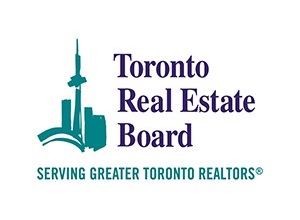“There will be some volatility in 2018.”
 So Jason Mercer of the Toronto Real Estate Board opened his address on the Greater Toronto Area (GTA) resale home market as part of Altus Group Data Solutions’ 10th annual state-of-the-market event.
So Jason Mercer of the Toronto Real Estate Board opened his address on the Greater Toronto Area (GTA) resale home market as part of Altus Group Data Solutions’ 10th annual state-of-the-market event.
“In the first half of the year, we’re going to be experiencing an unwinding of some of the impact of the Fair Housing Plan coming up against what remains to be seen of the actual impacts of the OSFI (Office of the Superintendent of Financial Institutions Canada) guidelines stress test,” said Mercer, TREB’s market analysis and service channels director.
He presented the forecast on Jan. 26 in the Ritz-Carlton Ballroom in Toronto.
Sales drop by 21,000
MLS sales for the GTA dropped from 113,000 in 2016 to 92,000 last year. Sales had been on pace for 130,000 in 2017 through the first part of the year until the provincial government introduced Ontario’s Fair Housing Plan on April 20.
The plan introduced actions to address demand for housing, protect renters and homebuyers, and increase housing supply and information-sharing. Its measures included expanding rent controls and introducing a 15 per cent non-resident speculative tax.
As part of changes to Canada’s mortgage underwriting standards, OSFI established a new minimum qualifying rate, or “stress test,” for borrowers making a down payment of more than 20 per cent of a home’s value.
Stress test requirements previously applied only to insured mortgages (those with down payments of less than 20 per cent) and most variable mortgages and terms of less than five years. The stress test requirement came into effect on Jan. 1.
The combination of Ontario’s Fair Housing Plan, the OSFI stress test and higher borrowing costs (due to increased interest rates) are serving to keep home sales down. They’re counteracting positive factors including increased immigration, a tight labour market with low unemployment and rising wages, and a tight rental market that should increase home sales.
GTA rental market
The purpose-built apartment vacancy rate in the GTA fell from 1.4 per cent in 2016 to 1.1 per cent last year, while the condominium apartment vacancy rate dropped from one per cent to 0.7 per cent. An unbalanced rental market exists because vacancy rates are so low and not enough new purpose-built rental buildings are being constructed.
“I don’t think rent controls do anything to help bring on more rental accommodation or make the rental market more affordable,” said Mercer.
“If you’re an investor looking at a purpose-built rental property, or if you’re an individual who wants to buy a couple of condos to rent out, you’re taking a step back and having a second look at that. The sky’s the limit on the cost side and you have a hard ceiling in terms of how much you can raise rents.”
Mercer expects home resales in the GTA through the first half of 2018 to be on an annual pace of 85,000 to 90,000, and then to pick up somewhat in the second half of the year.
Even though detached low-rise house prices are expected to remain relatively flat, it should remain a seller’s market as semi-detached and townhouse prices are forecast to rise slightly and condo unit prices could increase by another 15 to 20 per cent.
“The condo market remains really, really tight and we’re going to continue to see double-digit increases in prices,” said Mercer . . . “whereas on the detached side of the market, we’re not seeing as many high-end sales, which affects the average price to a certain degree.”







